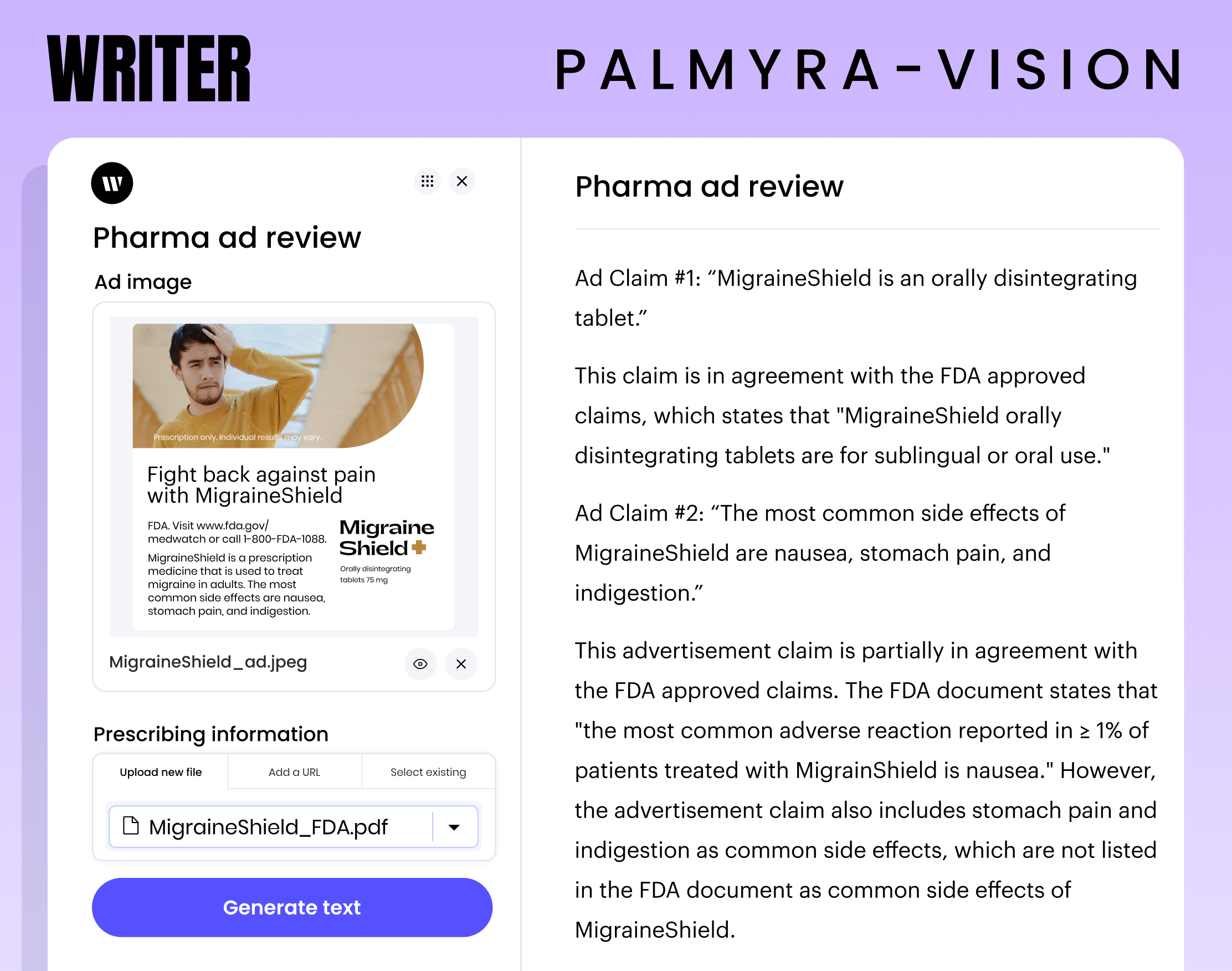The latest Writer templates can create text from images including charts and graphs

[ad_1]
As generative AI continues to dominate the headlines, it’s sometimes difficult to find actual business use cases among the hype. writer is a San Francisco startup that creates AI-powered creative writing products with the enterprise in mind. Today the company announced a new capacity Palmyra model Which generates text from images, including graphs and charts, which they call Palmyra-Vision.
Mai Habib, the company’s co-founder and CEO, says they made a strategic decision to focus on multimedia content, and the ability to create text from images is part of that strategy. “We will focus on multimodal input, but on text output, thus creating the text and vision that is delivered via text,” Habib told TechCrunch.
By following that guiding star, the company decided to analyze images, rather than produce them (at least for now). They reserve the right to create charts and graphs at some point from the data, but that’s not something they do at the moment. This version specifically focuses on creating text from those types of images.
The company uses a multi-model approach to produce Palmyra Vision results, where each model has a specific job to do in determining what is in the image and then generating text with four-ninths of accuracy, according to Habib.
This has a number of use cases including an e-commerce website generating text from thousands of changing images to populate the website with the latest merchandise without the need for a human to keep up with each change, or automatically interpret key takeaways from charts and graphs. Another example is compliance verification. For example, a pharmaceutical company can use Palmyra-Vision to perform an automated FDA compliance check against ad copy, ensuring that the ad is compliant with FDA regulations as described in an associated document, as shown in the example below.

Palmyra-Vision example of a pharmaceutical company screening an ad against a document that complies with FDA requirements. Image credits: writer
Finally, the product can interpret and summarize handwritten notes and convert them to text, but Habib says it requires training the model on individual use cases such as medical or insurance cases, for accuracy to be there.
Habib says she does not recommend using these tools without human review as part of the workflow. She believes this is absolutely necessary because any model can hallucinate (make things up) or simply get the facts wrong, and it is important for people to verify the results. Although they always recommend this to all clients, and most understand it at this point, she believes it will eventually require a more automated workflow to achieve this consistently across clients, which is something she says they are working on.
The company has raised $126 million so far per Crunchbase data. He is currently talking to large cloud infrastructure platforms about partnering as they try to scale the company. Its most recent round was a $100 million Series B last September led by Iconiq.
The latest version of Palmyra with image-to-text capabilities is available starting today.
[ad_2]
Source link




